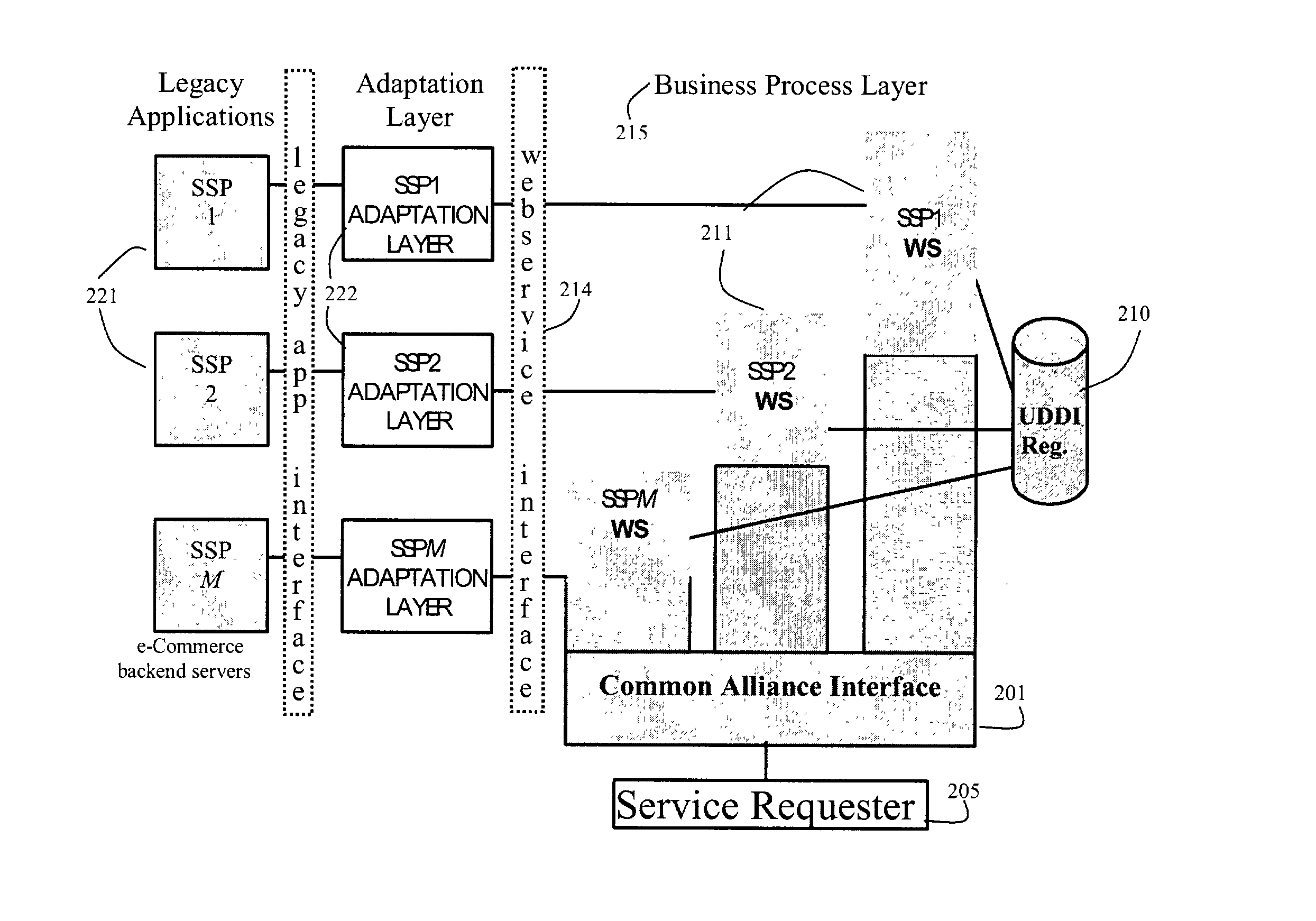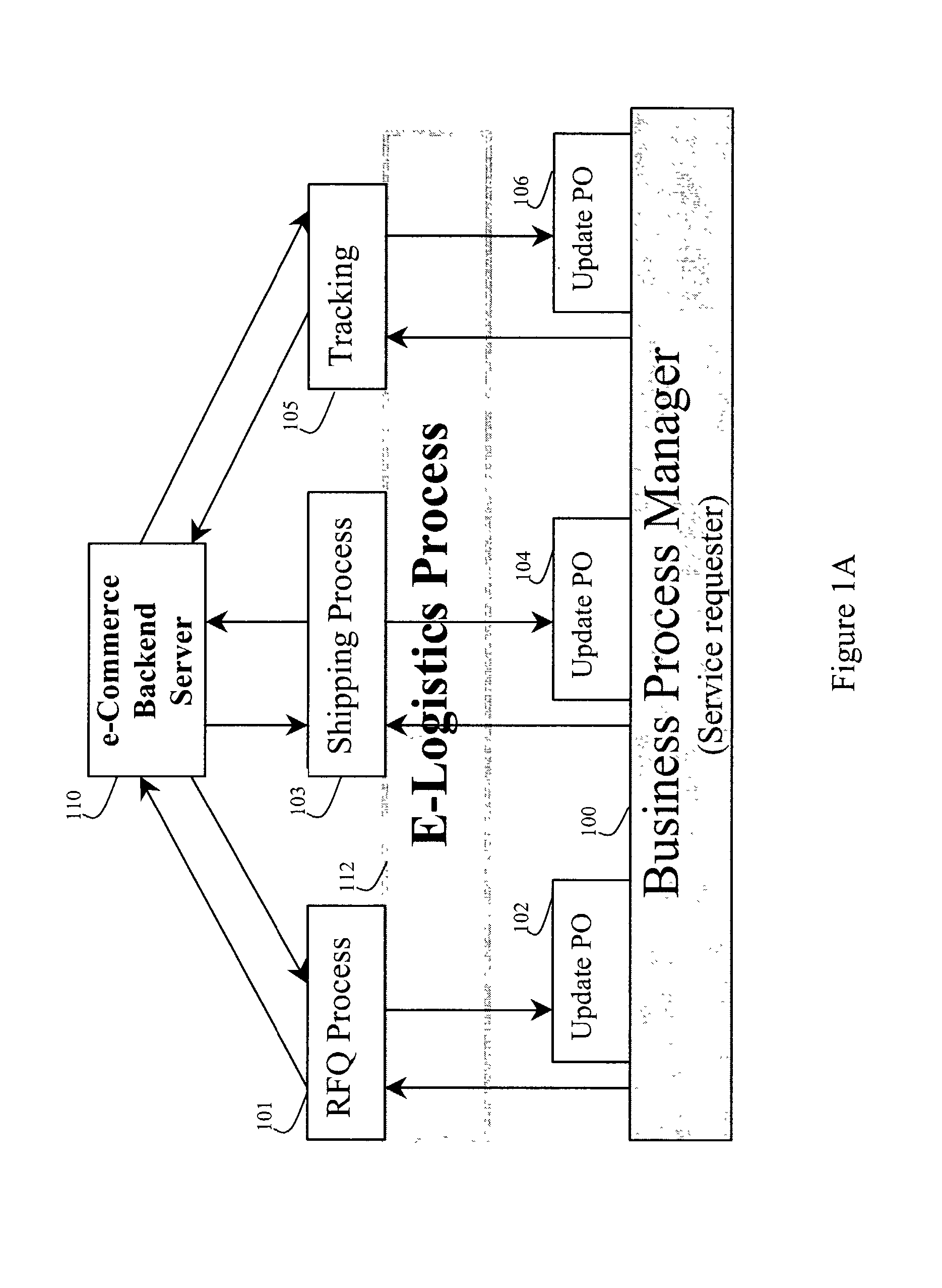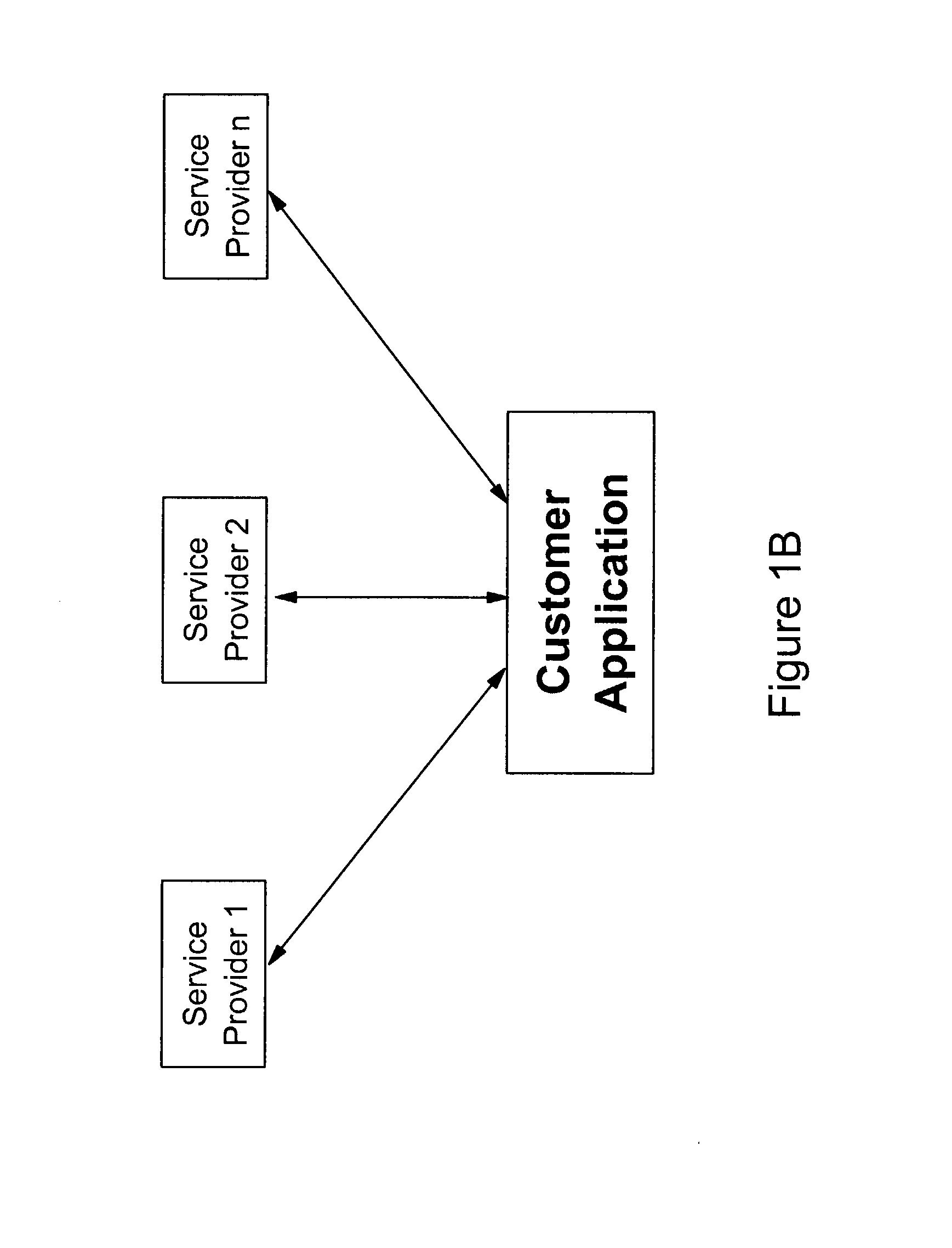Method and system for integrating e-Logistics processes into a user/provider interface using Web Services
a web service and user interface technology, applied in the field of methods and systems, can solve the problems of manual construction, no common service interface to allow users/customers to easily integrate existing tools, and high labor intensity and time-consuming
- Summary
- Abstract
- Description
- Claims
- Application Information
AI Technical Summary
Benefits of technology
Problems solved by technology
Method used
Image
Examples
Embodiment Construction
[0031] Referring now to the drawings, and more particularly to FIG. 1, there is shown an interaction diagram giving a high level view of ELPIF. The typical e-Logistics processes include Request For Quotes (RFQ) 101, Shipping 103, and Tracking 105. As shown in FIG. 1, these e-Logistics processes interact with the Business Process Manager 100, which requests services from an e-Commerce back-end server 110 (e.g. a UPS server, a FedEx server, or an Airborne server). The business process manager 100 invokes the RFQ process 101 to get the basic services such as getting the quotes in an e-logistics process. Whenever a response is obtained from the RFQ business process a purchase order (PO) is updated 102. Shipping process 103 is also invoked by the business process manager 100 and upon completion updates the PO (at 104). Once goods are shipped, the tracking process 105 is invoked and a tracking number is given to the customer and that tracking number is mapped to the PO number (at 106) in ...
PUM
 Login to View More
Login to View More Abstract
Description
Claims
Application Information
 Login to View More
Login to View More - R&D
- Intellectual Property
- Life Sciences
- Materials
- Tech Scout
- Unparalleled Data Quality
- Higher Quality Content
- 60% Fewer Hallucinations
Browse by: Latest US Patents, China's latest patents, Technical Efficacy Thesaurus, Application Domain, Technology Topic, Popular Technical Reports.
© 2025 PatSnap. All rights reserved.Legal|Privacy policy|Modern Slavery Act Transparency Statement|Sitemap|About US| Contact US: help@patsnap.com



